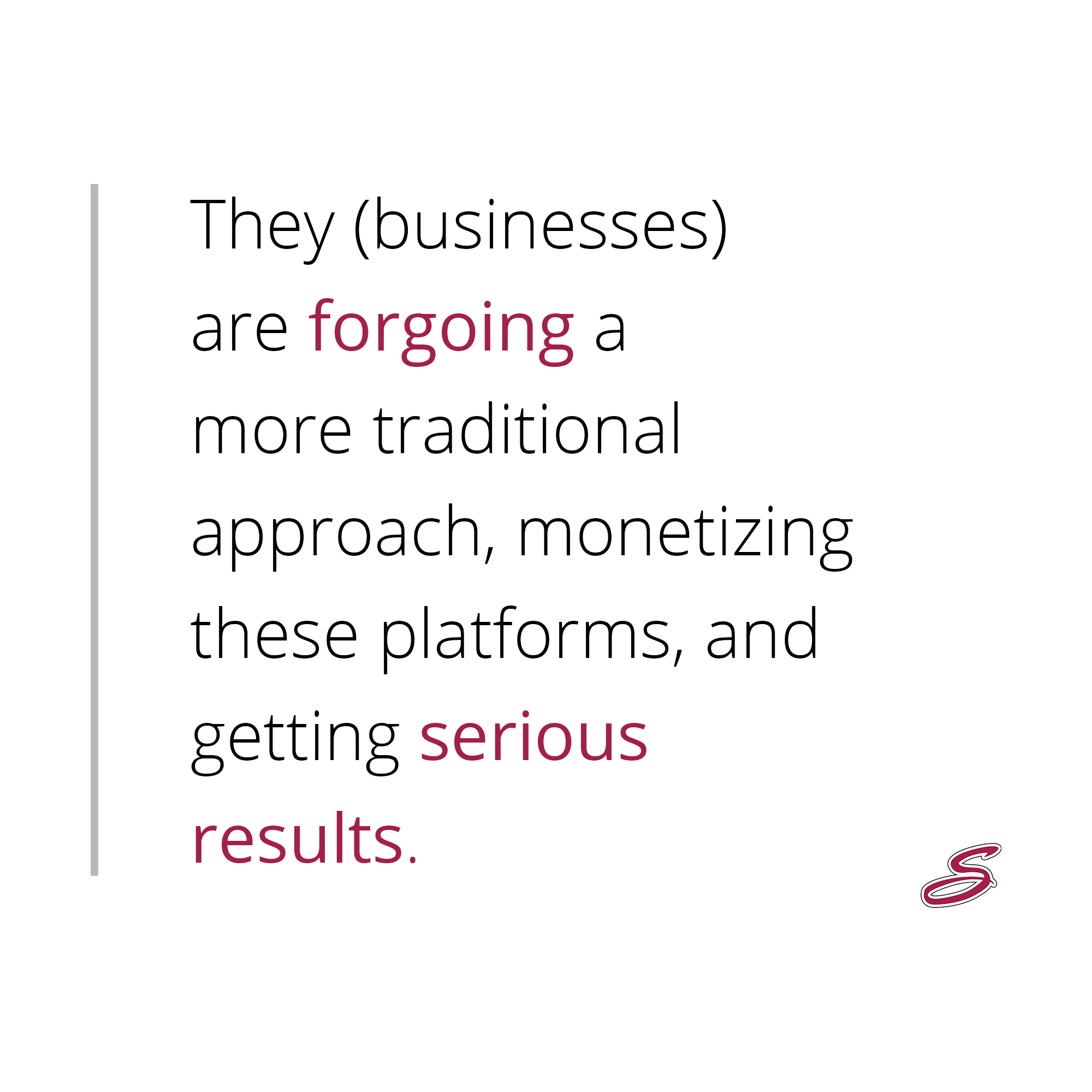Influencers for the Rest of Us
Written By - Drew Reed
These advertising techniques are not new. I was raised in the 80s and 90s when popular toys always had their own cartoon series. Kids could see their toys come to life on screen, and if they did not have the toys, they needed them. And like marketing-magic, a toy commercial would appear showing other kids playing with the exact toy you wanted. Companies had to put up some serious cash for toy lines, a cartoon series, and T.V. spots...sometimes it was a home run, and sometimes it wasn’t...remember Tonka® Rock Lords, that Transformers®’ knockoff? Yeah, me either. Now, fast-forward to 2021, and businesses have caught on that there are a lot of these influencers on social media promoting everything from toys to makeup, clothes, and tools. They are forgoing a more traditional approach, monetizing these platforms, and getting serious results.
Now you might be asking - like I was - “But, what about the rest of us that cannot send a copy machine, cubicle, or sample of an annual report to an Instagram Influencer?” Although I would love to see Ariana Grande talk about UV coating, or Dwayne “The Rock” Johnson discuss the amazing speed of the duplexing option on one of our multifunction printers...but I digress. So, here’s leveraging influencers for the rest of us:
Micro-Influencers.
One method to consider is the micro-influencer. They have a following of 1,000 to 10,000 and upwards of 100,000. That’s a far cry from the 40 million followers the influencer has, however, those fewer followers are much more loyal to the content. There are currently around 157 million micro-influencers on Instagram that are giving their followers a more authentic experience with the products they promote. Marketing research indicates that 49% of users say they trust the recommendations from these influencers. They often appeal to niche markets, are usually much more affordable, and easier to come by. Read more about them here.
Asking for Reviews from Current High-Value Customers.
Every industry has a leader that other people look up to. Even if they are direct competition, other businesses have their eye on them. It’s always good practice to ask for a Google or Facebook review, but what about monetizing that leader’s voice? What about paying or offering them incentives to actively promote your products and services? They could make a video of themselves using your products, tell their audience why your product is best, and why they should consider buying from you. It is very likely that an industry leader is being followed on social platforms by others in that same industry. Why not leverage that? It’s a bit of a blend between micro-influencing and sponsorship. You’ll need to get creative, but there’s a lot of upside to this kind of partnership.
Get Your Team Involved.
The best influencer, micro or otherwise, is the one that is most authentic and passionate about the product or service being offered. Who better conveys that passion than you and your team? Of course, you have a personal interest and self-promotion doesn’t always go as well as others promoting you, but there’s still value in sharing your own brand. Make it a part of your company culture that whenever someone sees a tagged post that they share it on their platforms too. If they got a nice email from a client about a job-well-done, they need to share it with whoever runs point on your marketing so that content can be shared. When they are out helping customers, they should snap a couple of photos or videos (with permission, of course). The more real-life the better, and who better to share the day-to-day than people living the day-to-day of the business?
The bottom line is that you need to find what works for you. However, if the world of influencers has taught us nothing else, it’s that people want an authentic experience with the people they follow and the products they buy. Kids would rather watch Ryan, a real kid like them, actually play with the toy and have fun than actors doing a 30-second T.V. slot showing the toy doing things it can’t actually do (i.e. Duke Caboom…“Yes I Canada!”).
I encourage you to dig a little deeper into the world of influencers and find other ways to engage your audience in a more personal way.
We hope this helped a little. Leave us some questions or feedback in the comments and click one of the share buttons below…thank you!
Edited By - Liz Sanders
Research - Elizabeth Collins


